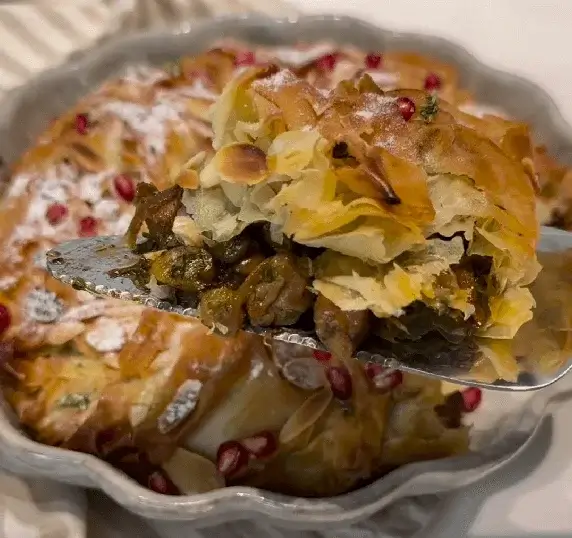Festive Moroccan Chicken Pastilla Recipe
We may earn a commission from recommended products, at no extra cost to you. See Disclosure.
- Medium sized round baking pan
INGREDIENTS
- 1 pound/450 grams phyllo dough sheets, completely thawed in the fridge
- 1 pound/450 grams chicken thighs, cut into small cubes
- 2 large onions, sliced into strips
- ½ cup toasted almonds
- ½ cup pine nuts
- ½ cup raisins
- ½ cup parsley, chopped
- 2 tablespoons pomegranate seeds for garnish
- Powdered sugar for dusting
Seasoning:
- 3 tablespoons olive oil
- 1 teaspoon cinnamon
- 1 teaspoon coarse salt
- 1 teaspoon ground black pepper
- 1 teaspoon turmeric
- 2 tablespoons cumin
- Cooking spray for greasing the phyllo sheets
INSTRUCTIONS
- Heat a pan with olive oil and add the onions. Sauté until lightly browned. Add the almonds and pine nuts and sauté until well toasted over medium heat. Add the chicken cubes and cook until they change color. Add the spices and cumin and mix well. Remove from heat and allow it to cool, then sprinkle with chopped parsley.
- Preheat the oven to 350°F (180°C).
- Brush two sheets of phyllo dough with oil and place the first layer in the base of a baking dish. Repeat this process for three layers. Add the chicken mixture and spread it evenly using a spoon. Fold the sides inwards. If the sides are not enough to cover the pastry from the top, add more phyllo sheets and sprinkle with oil to seal the pie.
- Sprinkle the pie with scattered almonds and bake for about 30 minutes or until it turns golden brown. Let it cool slightly on a rack, then sprinkle with powdered sugar and pomegranate seeds before serving.
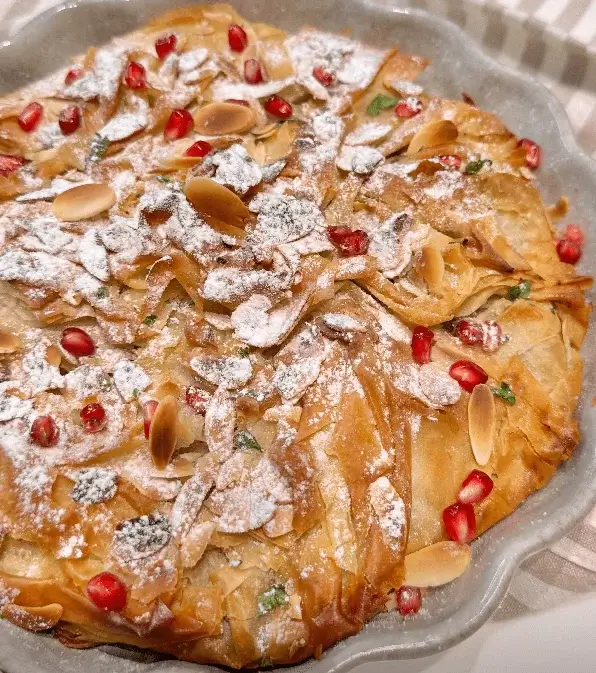
FAQ
What is the origin of pastilla?
Pastilla, a culinary masterpiece from Morocco, boasts a rich and intriguing history. Its origins trace back to North African and Moorish influences. The dish is believed to have roots in the ancient city of Fez, Morocco, known for its intricate cuisine. Over centuries, it evolved, combining local ingredients and techniques with influences from Andalusian Spain and the Middle East.
Historically, pastilla was prepared with pigeon meat, a symbol of luxury and opulence. Over time, chicken became a more accessible substitute. Today, it continues to hold a special place in Moroccan cuisine, celebrated during festive occasions like weddings, holidays, and family gatherings, reflecting its historical importance and the fusion of diverse culinary traditions.
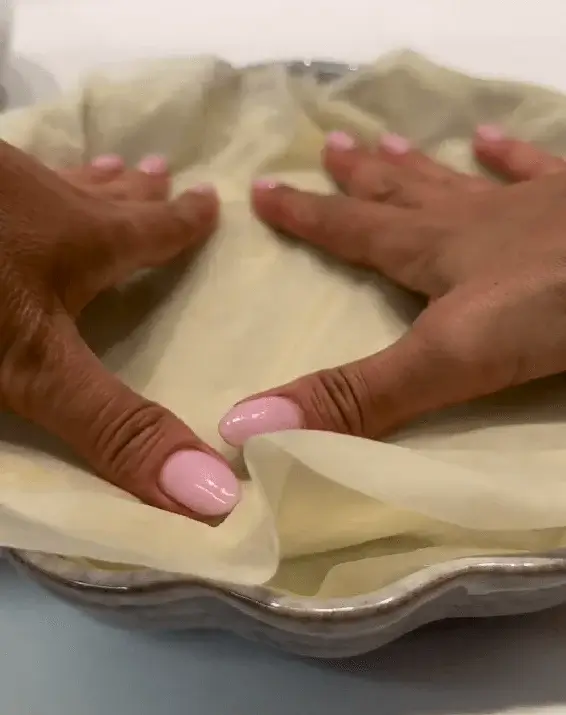
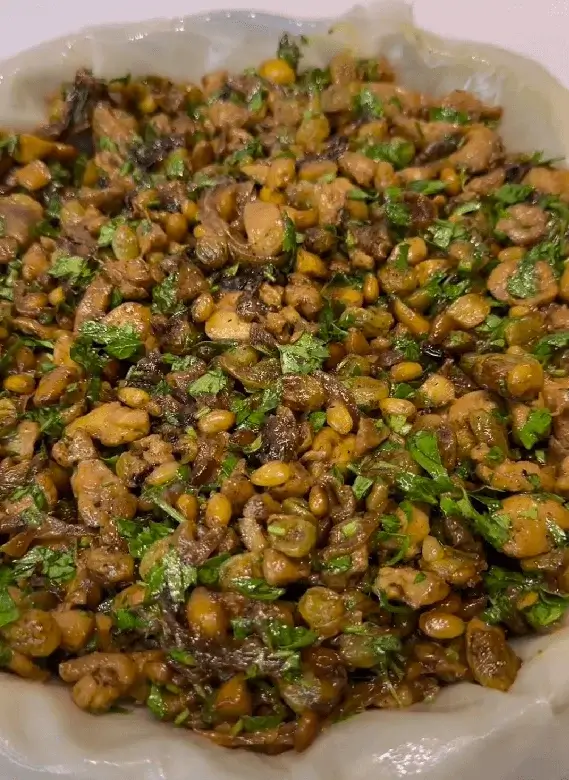
What can I substitute for phyllo dough if I can’t find it?
If phyllo dough is unavailable, you can opt for puff pastry sheets as a suitable substitute. While puff pastry has a slightly different texture, it can still provide a flaky and crispy outer layer for dishes like pastilla. Alternatively, you could use thin tortillas or crepes for a unique twist, though this will alter the traditional texture.
Can I make this moroccan chicken pastilla recipe in advance?
Yes, you can prepare Moroccan chicken pastilla in advance. After assembling the pastilla, you can refrigerate it for a few hours or even overnight, tightly covered. When ready to serve, simply bake it as directed.
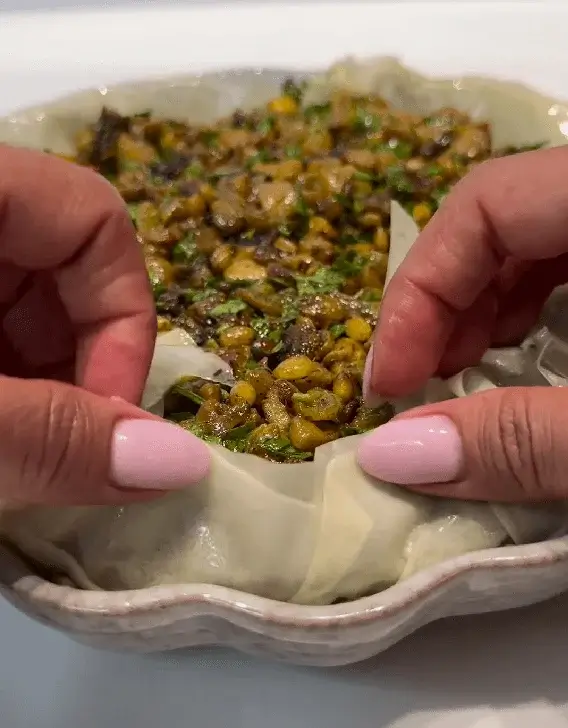
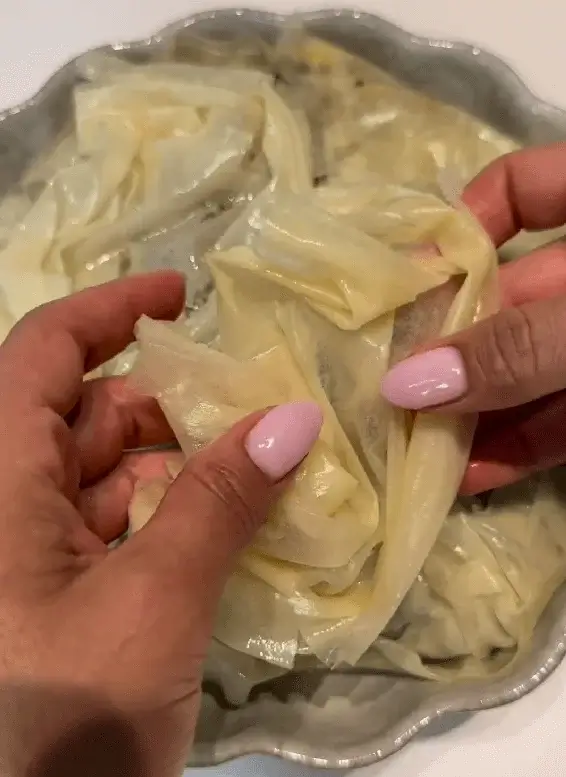
How do I store leftovers?
To store leftovers from Moroccan chicken pastilla, follow these steps: First, allow any remaining pastilla to cool to room temperature. Then, wrap it tightly in plastic wrap or aluminum foil to prevent moisture loss and refrigerate it. It’s best to consume this Moroccan chicken pastilla within 2-3 days for optimal taste and texture. When reheating, use an oven or toaster oven to help maintain the pastry’s crispiness, rather than a microwave.
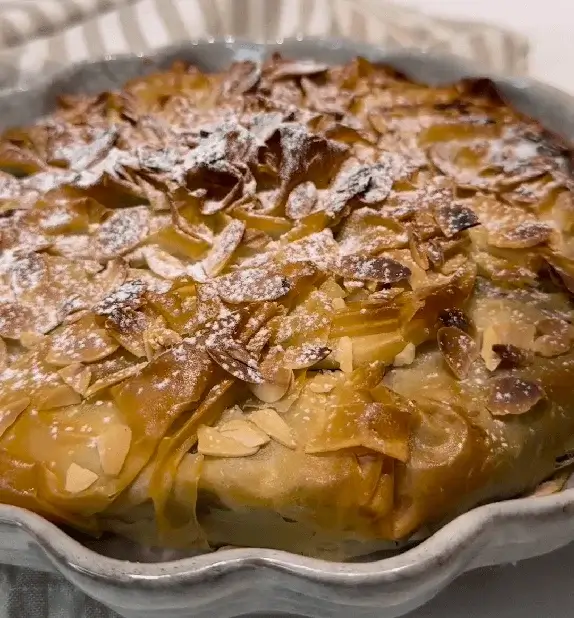
special tips for handling phyllo dough
Handling phyllo dough can be a bit tricky, but with some tips, you can master it. First, ensure it’s thawed completely in the refrigerator. Keep it covered with a damp cloth or plastic wrap while working to prevent drying out. Brush each sheet with oil to enhance flavor and crispiness. Layer multiple sheets for thickness, brushing each one. Don’t worry about minor tears; they won’t affect the final result. Once baked, let the pastilla cool slightly before cutting to maintain its structure. Phyllo dough requires patience and gentle handling, but the delicious, flaky outcome is worth it.
